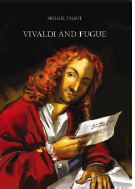Vivaldi and Fugue
Sebbene Vivaldi non sia universalmente noto come compositore di fughe – anzi, la tradizione storiografica tende a considerare il suo stile poco contrappuntistico – egli ci ha lasciato almeno un centinaio di composizioni che contengono delle fughe o degli elementi ad essa riconducibili. Poiché dimostra una conoscenza della tecnica fugata assai approfondita e affatto inconsueta in un violinista-compositore, possiamo supporre che in gioventù abbia preso delle lezioni, secondo la tradizione dei maestri di cappella. Anche se il suo interesse nei confronti della scrittura fugata ebbe origine nell’ambito della composizione vocale sacra e dalla sua inclinazione per il genere musicale del concerto a quattro senza solista, egli era in grado di incorporare degli elementi fugati all’interno delle più disparate strutture musicali, come la forma bipartita, la forma-ritornello e quella dell’aria col da capo, tanto che sono veramente pochi i generi musicali in cui si astenne dal farne uso. L’interesse di Vivaldi per questa tecnica raggiunse un picco nel periodo 1725 – 1735 ca., prima di scemare nei suoi ultimi anni di vita. Oltre a una trattazione delle fughe vivaldiane, la monografi a indaga i vari aspetti inerenti la terminologia e la prassi legata a questa tecnica compositiva in grado di interessare sia gli studiosi che gli amanti della fuga.
La pubblicazione costituisce il duecentesimo titolo edito dall’Istituto Italiano Antonio Vivaldi dal 1978, anno in cui è entrato a far parte della Fondazione Giorgio Cini.
